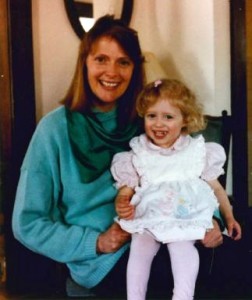Mary Hatch, one of our Educational Support teachers, has been with City of Lakes Waldorf School since the very beginning, 25 years ago. It was fun to walk down memory lane with her. She described how Waldorf is difficult to understand but easy to “get”, the incredible trust of parents in those early days, and the vivacity of City of Lakes Waldorf School today.
Mary first encountered Waldorf education while living in Boston, studying nutrition, natural foods and macrobiotics. Many of her friends sent their children to Belmont Waldorf School, so she looked into it too. She immediately loved the community, and started reading Waldorf literature voraciously. Anyone who has tried to read Steiner knows the dense philosophy can be hard to penetrate!
“I started reading and I didn’t understand it, but I felt like I had reached home. I knew this approach to education was right. I felt empathy right away,” says Mary.
It also took time for her daughter to adjust to life in a Waldorf classroom. “My daughter Jessica was a bull in a china closet,” she laughs. She tells of one time when all the children had gone to play outside, and when everyone came back, no one could find Jessica. Everyone was frightened, thinking the worst, and just about to call the police. Someone in the office went to fix herself a cup of tea to calm her frayed nerves, and thought perhaps she heard mice in the cupboard. She opened the door, and- “There was Jessica, in the cupboard eating sugar cubes,” chuckles Mary. “She had frightened these people to death, they were so angry. Then they came to my house and saw the TV, and I felt like the worst parent on earth! Her poor teacher was at the end of her rope.”
Mary removed the TV and committed to doing handwork with her daughter each afternoon, and watched as an amazing transformation took place. Soon her daughter was directing all that energy positively and her teacher said she’d become one of her most delightful students.
Life took Mary and her family to Venezuela for a year where she continued to study anthroposophy and give lectures on Waldorf education. “I missed it so much. I missed school, I missed the community.” She started to think about starting a school of her own when she returned to the United States, and began sending letters to different anthroposophical branches from Toronto to Baltimore to find out how she might go about opening a school in Minnesota.
She found a mentor in Maulsby Kimball, who gave her confidence, guidance and support for her vision. “He gave this delightful talk in his rocking chair. He told the group to close their eyes and he would take them on a tour of the Waldorf school. He walked us from room to room- here are the paintings on the walls, here is the music playing, there are the children- and everyone had these smiles on their faces as they imagined it. From that, I got a small group of women together, and we worked for 3 years to start the Minnesota Waldorf School with a Kindergarten.”
But this tenacious woman wasn’t done starting schools quite yet. City of Lakes Waldorf School was next. When Minnesota Waldorf School decided to move to Inver Grove Heights, many people in Minneapolis were concerned about the distance. “No, we thought that was too far away to send these little tiny kids. I told the CLWS founding mothers, if you pull it off, I’ll join you and we’ll start from the beginning. ”
That began many years of arduous, but fulfilling work. She helped organize informational meetings at the Linden Hills Library. She remembers the confidence, solidity and determination that Martha, Nina and Jennifer all brought. Mary usually told a fairy-tale to help prospective parents understand early childhood. Leonora the eurythmist shared some beautiful movements, and Lee Stevens explained the latest on neurology and learning in children, as well as games for teaching math and reading. Mary is still amazed at the faith of those that joined the school in the very beginning. “How in the world did they trust us?” she marvels. “There was nothing there to see- it was just an idea we presented them!”
Looking at the school today at 25, she marvels at the administration of the schools. “We were always putting fingers in the dyke,” says Mary. She remembers fireworks over whether or not teachers should get health insurance, or the expectation that teachers would do the tremendously difficult work of running a classroom, and then also find time to scrub down the bathrooms every night. “Now, look at it! Everything is so cared for, the t’s are crossed i’s are dotted. There are challenges, but they are dealt with, the school is not going to close or disappear into the ether.”
Mary feels that the school fills a need and that it was meant to be here. “We needed to be here in this area, there was a place for us, and we had to get our act together to take that place, but it was here in Minneapolis, waiting for us.”
The holistic way of seeing the child is the greatest gift the school has to offer families. “Holding the whole child – not just asking if they are going to pass the test. It’s giving them time to develop and become a whole being.” Mary delights in the vitality at the heart of the school. “It’s like joining with life, encouraging life to come forth. I think parents feel that in themselves and I definitely feel the children rejoice in it.”
“Every single faculty member offers an amazing gift in the way they meet the children. I’m awed by it. We can’t see ourselves as an exclusive little corner, we need to be part of the whole, it’s for everybody, it’s for all of humanity.”


